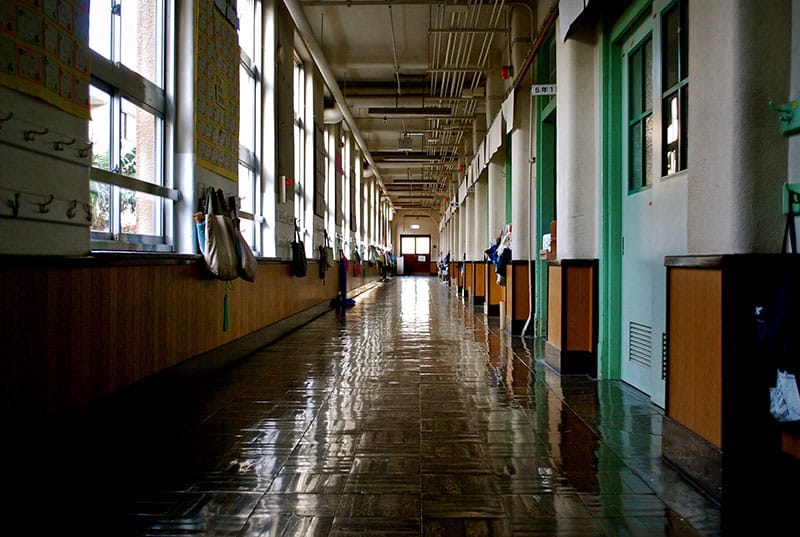What Are the Issues and Risks When Removing Asbestos From Schools?
With so much at risk, it’s hard to believe that ACMs were once prominently used in school buildings. Before their health risks were known, ACMs were used as a precaution. Since asbestos is fire-resistant, it was regularly used in insulation. Roofing, walls, gutters, pipes, and tiles commonly have ACMs from when the building was put up or renovated between the 1950s and 1970s.
Despite the ban on asbestos, there are still schools that contain the material. What’s the safest and most responsible way to remove those ACMs from schools? Let’s dive into this topic.
Health risks of asbestos in schools
It’s of utmost importance to prioritise the safety of the school community. Whoever is working, studying, or visiting the premises where asbestos exists could be at risk for inhaling asbestos fibres. That includes staff, students, teachers, and school visitors, whether they’re parents showing up for a meeting or contractors hired to work on the building.
There is no safe exposure event when it comes to asbestos. Any amount of exposure puts people at risk. Asbestos-related diseases that can occur later in life include mesothelioma, an aggressive form of cancer. Other types of cancer can also result, along with lung damage like scarring or asbestosis.
Presence of asbestos in school buildings
While the 1950s to 1970s saw the most active use of asbestos in building materials, any schools with a history dating back before the year 2000 may contain ACMs. There are many areas where ACMs may exist in schools, including:
- Boiler insulation
- Ceiling tiles
- Cement sheeting
- Ductwork
- Piping insulation
- Popcorn ceilings
- Textured paint
- Vinyl flooring
- Wallboard
There are several steps to take before the ACMs can be safely removed. First, the duty holder must assess the condition of the asbestos. This will help determine how to safely remove it or if it’s safer not to remove it to reduce the risk of damage. For ACMs that are not damaged and are therefore not posing a significant threat, regular inspections are necessary to ensure they remain undamaged.
According to the Health and Safety Executive, visual inspection is often effective for monitoring the condition of the ACMs. These inspections should also include checking the materials that protect the ACMs.
Challenges of asbestos removal from schools
While removing asbestos from schools seems like the safest option, there’s a lot to consider. Challenges range from the cost of removal to keeping students and staff safe during the process — which could mean closing the school.
Budgetary constraints
Removing asbestos from schools isn’t the only option. In some cases, it can be more cost-effective and safer to leave ACMs that are in good condition alone and monitor them regularly. Removing the asbestos waste can be dangerous if the contractors hired don’t properly seal the bags or try to break up the ACMs before disposing of them.
On the other hand, if the duty holder doesn’t take their responsibility seriously, a lot can go wrong. For example, they may not do a thorough enough visual inspection and miss areas that include asbestos. Plus, everyday activities that take place in schools can accidentally damage ACMs, posing a major health risk.
Overall, it’s important to compare costs. It may cost more upfront to have a contractor handle removal than to leave the ACMs alone and try not to disturb them. However, if the potential for disturbance is high, you may have to spend money on school-wide decontamination if there’s a release of asbestos fibres. That would cost quite a bit more in the long run.
Disruption of educational activities
When removing ACMs from school buildings, a common question is, “Will the school have to close?” Disrupting educational activities with an unplanned closure can affect everything from the routines of students to how they’re able to advance in their classes. Here’s what you should know about asbestos removal and school closures:
- If ACMs are in good condition, they may not have to be removed at all. An asbestos management plan will cover how the ACMs are monitored and protected.
- Damaged ACMs should be removed to prevent exposure.
- If the part of the school that includes the damaged ACMs can be safely sealed off from the rest of the school, the school can remain open.
- If the ACMs are in a regularly used part of the school, then either activities will have to relocate temporarily or the school must close.
- It’s best to carry out ACM removal during a school holiday when nobody will be present on-site.
Whichever option is chosen, careful planning is necessary to keep everyone safe and minimise disruption to the school year.
Safety of students, teachers, and staff
If there’s asbestos in a school building, who’s at risk? To play it safe, consider that nobody who is present in a building with asbestos is 100% protected. If asbestos is present, there’s a potential for coming into contact with it. However, managing the ACMs can significantly lower the risk.
Caretakers (like teachers) and contractors are at a higher risk of asbestos exposure than students because they’re more likely to damage ACMs. For example, teachers are more likely to hang décor in the classroom than students. If a ceiling tile or wall that contains asbestos gets damaged, fibres can become airborne. For those who are making repairs to the building and doing tasks like drilling, there’s also a high risk of damaging ACMs.
Unfortunately, since it’s difficult to see those fibres, it can be impossible to know that damage occurred. This is why there’s a duty to manage asbestos in the Control of Asbestos Regulations 2012 (CAR 2012). The location and condition of ACMs must be communicated to anybody who’s in a position to disturb them.
The same goes for when asbestos is removed from a school. It’s important for everyone on the premises to know safety precautions. For example, ACMs should remain intact instead of being broken down. They should be double-bagged in heavy-duty plastic bags and labeled appropriately. And anyone in the area where removal is taking place should wear the proper protective and respiratory equipment.
Proper procedures for asbestos removal in schools
Working with asbestos should be taken seriously. Following the proper procedures is necessary for keeping everyone on the premises safe now and in the future.
Hiring accredited and experienced contractors
If the duty holder decides that asbestos must be removed from the school, they’ll hire a contractor. The contractors hired should be both accredited and experienced. Licensing is required for contractors who work with asbestos coatings and insulation.
The duty holder must brief the contractors and provide with them all information possible about the condition and location of the ACMs.
Develop an asbestos management plan
The duty holder must put together an asbestos management plan. The following details are often included in these plans:
- Who the duty holder is (they’re the person responsible for managing asbestos on-site).
- Steps taken to monitor and manage the building’s asbestos, such as inspections and assessments.
- The asbestos register, which details where asbestos is located and its condition.
- Plans for future work on the ACMs and/or the premises.
- Plans for how the school community will be notified of asbestos-related decisions.
An asbestos management plan is needed so that the duty holder can safely manage ACMs in the school building. It’s also a requirement for legally complying with CAR 2012.
Communication and awareness
Schools are not legally required to inform parents that asbestos is present on the premises. However, some schools still opt to let parents know of the risk and how it’s being managed.
Informing teachers, staff, and students that ACMs are present isn’t about scaring them or making them feel unsafe. Instead, it’s a way to prevent accidental damage and raise awareness.
Moreover, when planning for asbestos removal, the school community should know what to expect and how it will affect them.
Final thoughts
While a school that’s free of asbestos is safer than one that contains ACMs, removing the asbestos poses its own risks. Hiring an experienced contractor or team to handle the removal is the best way to ensure everyone stays safe during and after the process.
Health should be the top priority when it comes to asbestos removal. From the contractors hired to handle the ACMs to the students who will return to school after a holiday break, everyone should feel safe and protected in a school environment.
Developing a proactive asbestos management strategy protects people’s health before a problem arises. It’s also the best way to keep costs down instead of having to respond to a much larger and more serious incident. Working with accredited professionals is always recommended for developing an asbestos management plan and effectively removing damaged ACMs.

Written by Callum McDonald
Callum McDonald is an expert in asbestos quality management, ensuring rigorous adherence to regulations and high-quality standards in removal projects. His focus on enhancing quality and client satisfaction makes him a crucial asset in safety and compliance within the field. Callum's expertise in technical support and oversight of licensed works underscores his commitment to excellence in asbestos management, providing invaluable guidance to clients in this specialised area.

